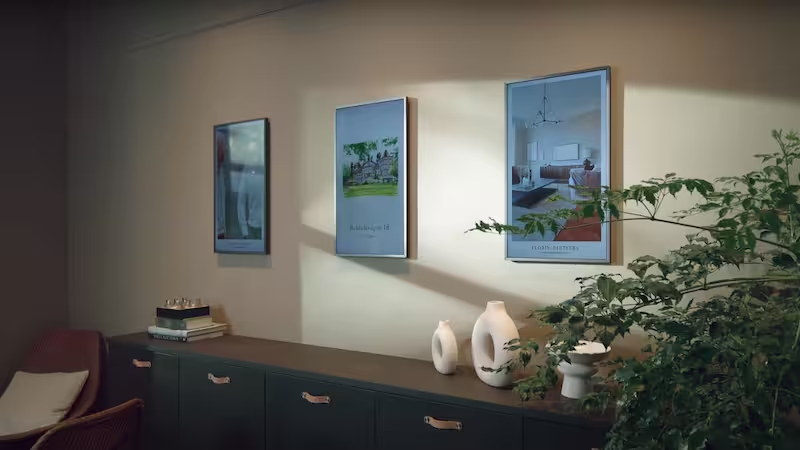
Table of Content
Your storefront window is one of your most important marketing tools. It’s the first thing people see when they approach your store, and it has the potential to either grab their attention or blend in unnoticed. Digital signage makes your window a dynamic, engaging space that works for you 24/7. By showcasing high-quality visuals, videos, and promotions, you can keep your display fresh, adapt to customer interests on the fly, and communicate your message clearly and efficiently.
The best part? It doesn’t require constant updates or a lot of effort on your part. With Look digital signage cloud-based software, you get powerful built-in tools that make creating and automating content updates easier than ever.
This article will guide you through the best practices for designing effective digital window displays that grab attention and leave a lasting impression.
Benefits of Digital Window Displays
Dynamic Content Drives Engagement
Dynamic content makes a huge difference when it comes to grabbing attention and keeping it. With digital window displays, you can easily show videos, images, and promotions that change over time. This keeps your storefront from looking static or stale, whether you're promoting a new product, running a seasonal sale, or just keeping things fresh.
Read also: Good Content Examples for Dynamic Digital Signage - Inspire with Look
Real-Time Content Updates
The ability to update content instantly gives you unprecedented control over your window displays. You can adjust pricing and promotions in real-time, schedule different content for various times of day, and quickly adapt to weather conditions or local events. This flexibility enables you to stay relevant and responsive to market conditions, something static displays simply cannot match.
Measurable Results
Modern digital signage systems provide comprehensive analytics that helps you optimize your window displays. You can track viewer counts, identify peak viewing times, measure content engagement rates, and conduct A/B testing to refine your messaging. With these insights, you can keep improving your campaigns and justify the investment in retail store window displays through concrete performance metrics.

Essential Features for Digital Window Displays
High-Brightness Screens
If you want your digital window display to stand out in all lighting conditions, the screen needs to be bright enough to compete with the sun. Aim for at least 1000 nits of brightness to ensure it’s visible even in direct sunlight. To avoid reflections that could make your content hard to read, look for screens with an anti-glare coating.
Automatic brightness adjustment is also a great feature, as it keeps your display clear and readable throughout the day, while also helping with energy efficiency. Additionally, commercial-grade heat management will protect the display from overheating, ensuring it lasts longer and stays in good condition.
Durable and Weatherproof Hardware
Your screens should be built to withstand the elements. Whether they’re outdoors or in semi-outdoor spaces, make sure they’re weatherproof, dust-resistant, and able to handle temperature changes. This ensures they’ll keep working well over time, no matter the conditions.
When choosing screens for outdoor or semi-outdoor use, it’s important to select hardware that can handle various weather conditions. Look for weatherproof, durable screens that are designed to withstand elements like rain, dust, and extreme temperatures, so your display remains functional no matter the forecast.
This kind of hardware ensures longevity, allowing your digital display to continue performing well over time, without worrying about frequent repairs or replacements. By investing in quality, weather-resistant technology, you’re setting yourself up for a reliable and long-lasting display that can endure all weather conditions, providing constant visibility and impact.
Related article: Digital Signage Hardware Selection - Ultimate Buyer's Guide
Content Design Best Practices
When it comes to content, less is more. Keep things simple and impactful. Changing the content every 5-7 seconds helps keep attention without overwhelming your audience. High contrast between the text and background makes your message easier to read, even on the brightest days.
Be sure the text is large enough to read from 10-15 feet away, so people can easily absorb what you’re showing them. Always focus on one key message or call-to-action per screen—this ensures that your viewers know exactly what you want them to do or remember.
Interactive Elements for Engagement
Interactive window signage can really boost engagement. You can include QR codes for quick access to promotions or website links, or even add touchscreens that let people interact with your content directly. Motion sensors can trigger content changes as people get closer, making the experience more dynamic.
Additionally, encouraging social sharing through hashtags or campaigns can extend your reach. Promoting a hashtag or running a campaign that invites customers to share their experiences not only engages them at the moment but also helps spread the word and build a sense of community around your brand.
Best Practices for Designing Window Screens
Create Targeted, Relevant Content
When you’re designing your content, make sure it’s relevant to what’s going on around you. Align it with seasonal trends, local events, or specific promotions. For example, if there’s a holiday or local festival coming up, you can create campaigns that tie into those events.
The more connected your content is to what's happening, the more likely it will catch the attention of passersby. Look DS can help with this by providing ready-to-use digital signage templates and easy-to-use tools to launch these time-sensitive campaigns.

Optimize Placement and Angles
Where you place your display is just as important as what’s on it. Make sure your screens are positioned where they’ll be visible from a distance of 10 to 15 feet. This helps ensure that people can spot them easily. Try to avoid locations where the sun could cause glare, which makes the content harder to read.
A good rule of thumb for screen height is around eye level—typically between 4 and 5 feet—so people can comfortably read it without straining. Think about the space around the screen, too—make sure it’s not crowded or blocked by anything that could block visibility.
Rotate Content Strategically
You don’t want your content to get stale. Rotating it regularly keeps things fresh and ensures it’s always relevant to the right people at the right time. Look Digital Signage makes it easy to schedule content to appear at specific times, so you can target peak hours or the times when certain groups of people are most likely to see it. For example, you might schedule lunch hour promotions or after-work specials based on when your target audience is most active.
Integrate Interactive Campaigns
Interactive campaigns can really elevate your display. Consider adding features like virtual fitting rooms that let people see how they'll look in real life or, product demos that provide a closer look at how something works. Polls are also great for encouraging people to engage, share their opinions, and feel more connected to your brand. These interactive features make your window display feel more personal and give people a reason to stop and engage with it.
Read also: Best Interactive Content Examples for Your Digital Signage
How Look Digital Signage Enhances Window Display Strategies
Easy Content Management
With Look Digital Signage, you can update your content in real-time, all from a remote location. This makes it easy to keep your displays fresh and relevant without needing to be physically present.
Scalable Solutions for Multi-Store Campaigns
If you’re running multiple locations, Look Digital Signage allows you to manage displays across all of them with ease. It’s simple to keep everything consistent and effective, no matter how many stores you’re working with.
Built-in Templates for Professional Content
Even if you don’t have a design team, Look Digital Signage has built-in templates that make it easy to create professional-looking displays. You can get your content up quickly without compromising on quality.

Make Your Window Displays Unforgettable
With digital window displays and digital signage software, you can enhance engagement with your audience, give yourself more flexibility in content management, and increase your brand visibility in a way that grabs attention and keeps it.
Start transforming your window displays with Look Digital Signage. Take advantage of all the features that can help make your displays truly stand out. Start your free 14-day trial period today!








